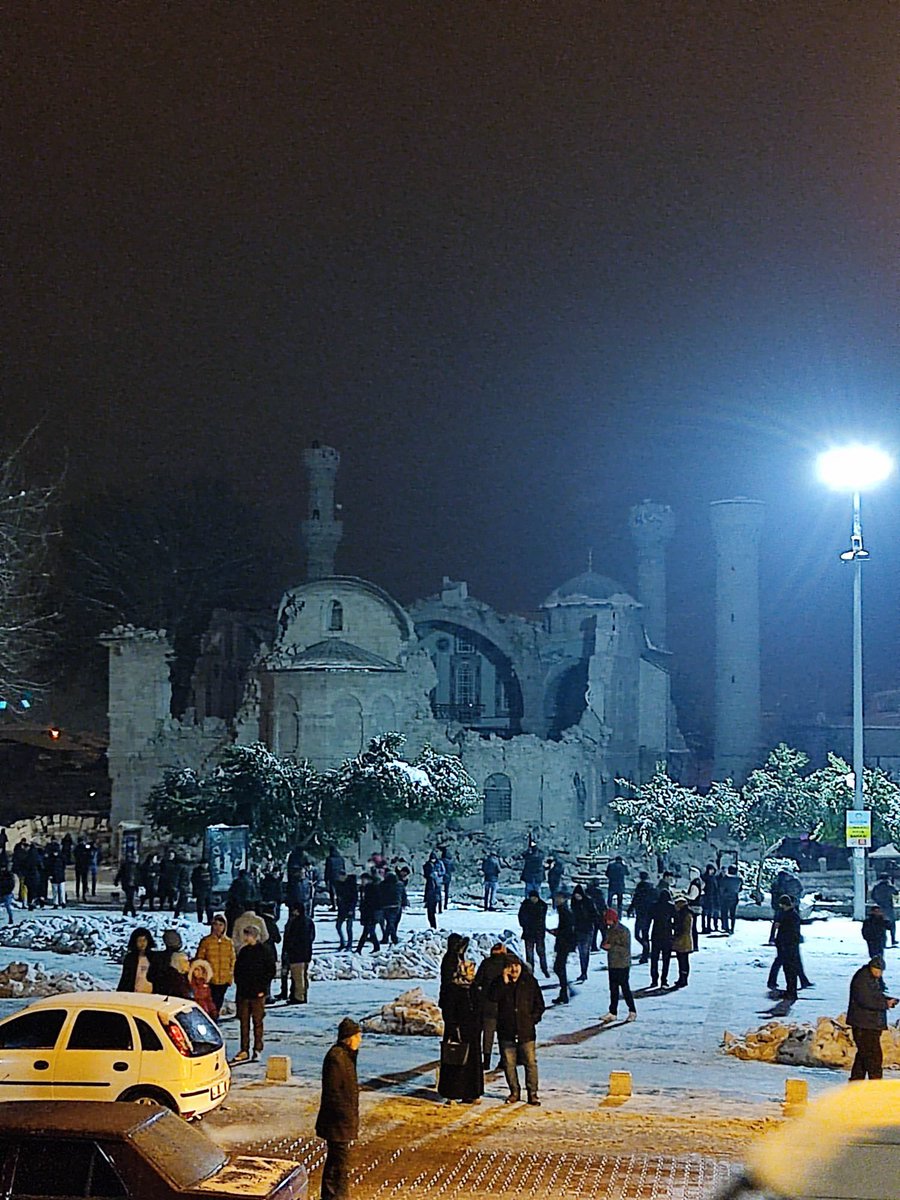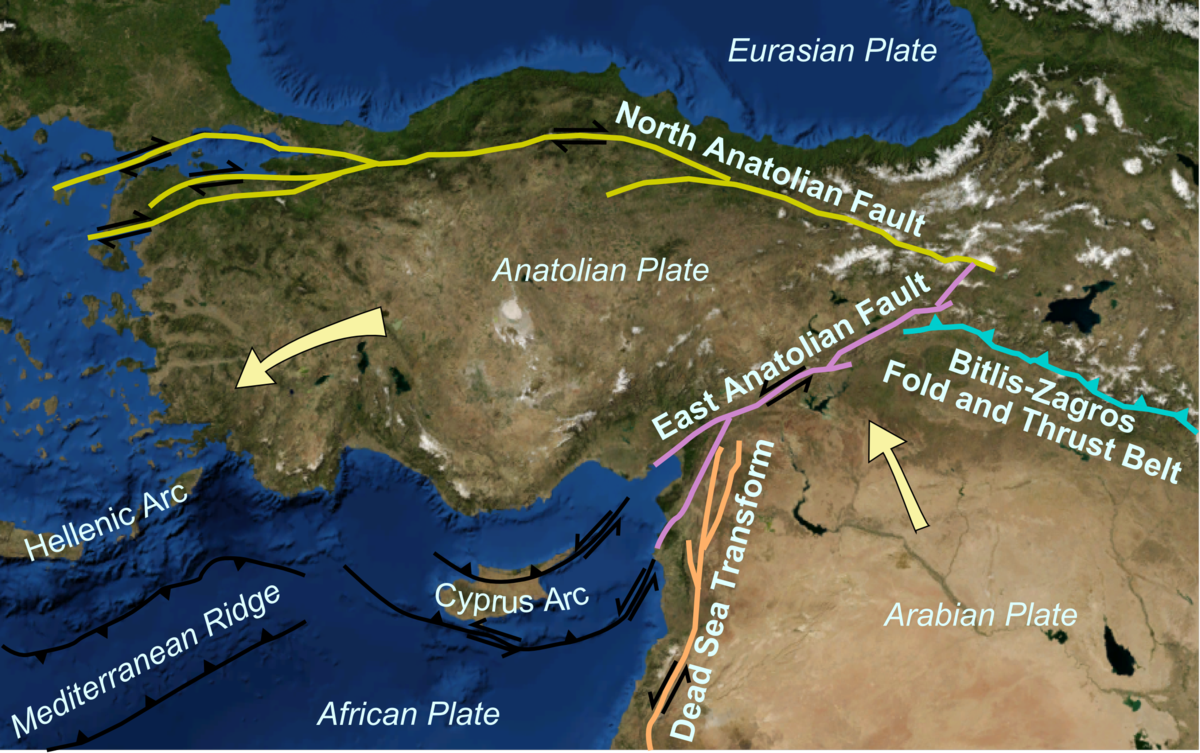A devastating earthquake has claimed 4,365 lives in Syria and Turkey. We look at what happened—and the geological reasons why this region is vulnerable to massive quakes.
Researched by: Sara Varghese & Nirmal Bhansali
Tell me about this earthquake…
The first quake: Turkey and Syria were devastated by one of the strongest earthquakes to hit the region since 1939. The 7.8-magnitude quake ripped through the two countries at 4:17 am in the morning on Monday—with tremors felt as far as Lebanon, Israel, and even Greenland. The epicentre was located in Turkey’s Gaziantep province.
The second quake: of 7.6 magnitude struck southern Turkey within 12 hours at 1:32 pm local time. Its epicentre was located in the Elbistan region of the Kahramanmaras province.
The map: of the affected area looks like this:

You can see the seismic waves spread across Europe below:
The devastation: As of now, the combined death toll in Turkey and Syria is estimated at 4,365—with over 16,000 injured. The scenes out of Turkey are a hellscape of collapsed buildings:
You can see a building fall apart during an aftershock:
This video from a store offers a glimpse of the strength of the quake:
This is the city of Iskenderun:
Also destroyed: Gaziantep Castle that had stood for more than 2,000 years.
 And the famous 13th century Yeni Mosque has partially collapsed:
And the famous 13th century Yeni Mosque has partially collapsed:

A double disaster for refugees: Turkey hosts 3.6 million refugees—the largest number in the world. And Gaziantep—the epicentre of the first quake—is home to one of the biggest refugee camps run by the UN. It is also where Syrians have rebuilt their lives and created a new home.
Point to note: Syria’s own official figures do not include the areas controlled by anti-government rebels. Among the hardest-hit is the northwest—where nearly half of the 4.2 million population is displaced—and lives in large tent camps. They are already in urgent need of humanitarian aid—but help will be hard to come by. Hospitals have been repeatedly hit by airstrikes either by the Syrian air force or its ally Russia. And border towns in Turkey—which were conduits for critical aid—have been destroyed.
How is the rescue effort going?
Rescue efforts: The scenes across Turkey are the stuff of nightmares—trapped survivors screaming as their relatives weep for them. Thousands of search-and-rescue personnel, firefighters and medics are working in 10 provinces—alongside 3,500 soldiers and civilian volunteers. A total of 5,606 buildings have collapsed—and many are in areas that are hard to reach.
The BBC’s Turkish language service reports that in some places help has been delayed or entirely missing. Frantic residents in the province of Hatay told Reuters:
"They're making noises but nobody is coming. We're devastated, we're devastated. My God... They're calling out. They're saying, 'Save us,' but we can't save them. How are we going to save them? There has been nobody since the morning.
The weather: also poses an immediate danger amid “extremely severe” winter conditions:
The earthquake struck early in the morning when people will have been asleep at home and the weather is very cold meaning those trapped in rubble face the threat from low temperatures. The first 24-48 hours is when most people are normally rescued in this situations, but the cold weather may reduce that time.
In Turkey, rescuers were hamstrung by a winter blizzard that covered major roads in ice and snow—while a severe storm hit northern Syria. The other big worry: thousands of people who have lost their homes are now out in the freezing cold.
Bracing for more: Experts say that the death count will definitely spiral as rescue efforts uncover more bodies—given the type of destruction:
Unfortunately the death toll is likely to climb quickly. A similar magnitude earthquake that hit Izmit in Turkey in 1999 killed more than 17,000 people and left more than a quarter of a million homeless. Early images show the pancake collapse of several buildings in the affected area and these are associated with significant loss of life — typically 30% of those in these kinds of collapse lose their lives.
Also, aftershocks: The region has already experienced 120 aftershocks spread over a distance of about 100-200 km along the East Anatolian Fault—which stretches across the southeastern portion of Turkey. And many of them were frighteningly strong:
About 11 minutes after the main quake hit, the strongest aftershock of 6.7 magnitude hit about 32 kilometres (20 miles) northwest of the main quake’s epicentre. Another intense aftershock with a magnitude of 5.6 then occurred 19 minutes after the main quake.
Experts expect there will be more such aftershocks in the days to come—which will add to the devastation and complicate rescue efforts.
Why are there so many quakes in Turkey?
Turkey is in one of the most earthquake prone regions in the world. In 2019, there were 23,380 quakes—and that number jumped to 33,000 earthquakes in 2020. In fact, “dozens of minor earthquakes and aftershocks occur daily.” And here’s why.
A timeline of quakes: The earthquake should hardly come as a surprise to anyone. Turkey has a long history of devastating earthquakes:
- In 1939, a similar 7.8-magnitude earthquake killed 30,000 people.
- In 1999, a magnitude 7.4 earthquake struck the western city of Izmit—killing more than 17,000 people.
- Three months later, a 7.2 earthquake resulted in more than 845 deaths in the province of Duzce.
- More recent quakes have been less lethal. Two quakes in 2020 claimed 20-odd lives each.
Data point to note: Almost 95% of Turkey is prone to earthquakes—and a third is at high risk.
What causes a quake: The Earth’s outermost layer is made of 15 slabs called tectonic plates. The boundaries between these plates—the fractures, so to speak—are fault lines. Any movement along these lines causes earthquakes.
Location, location, location: Turkey sits on the Anatolian plate—wedged between the Eurasian and African plates—with the Arabian plate pressing down on the north. It borders two major fault lines—The North Anatolian Fault and the East Anatolian Fault. The NAF—where the Anatolian and Eurasian plates meet—is “particularly devastating” and responsible for the most serious earthquakes in the region. OTOH, this disaster occurred along the EAF.
While most other parts of the world have to worry about one or two fault lines, this region resembles “a complicated geologic jigsaw”:
Geologically speaking, this region is wedged between the zone where the African, Eurasian, and Arabian plates meet up. To the east of the Aegean, the Arabian plate collides with the Eurasian plate, shoving up a series of mountains including the Zagros, a range that runs through Iran, Iraq, and Turkey. The colliding plates also send the Anatolian plate westward, as if it "is being pushed out like a watermelon seed between two fingers."
See what it looks like below:
 Whither quake protection? Despite the high risks and past tragedies, Turkey has done a terrible job of protecting its citizens from earthquakes:
Whither quake protection? Despite the high risks and past tragedies, Turkey has done a terrible job of protecting its citizens from earthquakes:
In 2021, in a “catastrophic projection”, an expert panel warned that 2,00,000 buildings in Istanbul stand at risk to medium-or high-level damage, jeopardising the lives of three million residents in the city. An investigation into the 1999 earthquake that killed thousands found buildings did not meet design requirements and were not earthquake resistant, as is required by the regulations. They also used poor construction material and were shoddily constructed, experts noted.
There is already talk of the brittle concrete used to construct the collapsed buildings—making them “extremely vulnerable to earthquake shaking.” At least 5,606 buildings have been destroyed.
The bottomline: A seismic map released in 2020 showed that 59% of India is prone to earthquakes. We’re just lucky not to have experienced a big one in recent times.
Reading list
For the best overviews of the current tragedy, check out Al Jazeera, BBC News and CNN. Reuters has the latest on the rescue efforts. The Hindu has a very good explainer on why Turkey is earthquake prone. New York Times has a timeline of Turkey’s earthquakes. The Guardian has an older but useful read on what quake-proof architecture looks like. NPR has the most on what’s happening in Syria.


 souk picks
souk picks